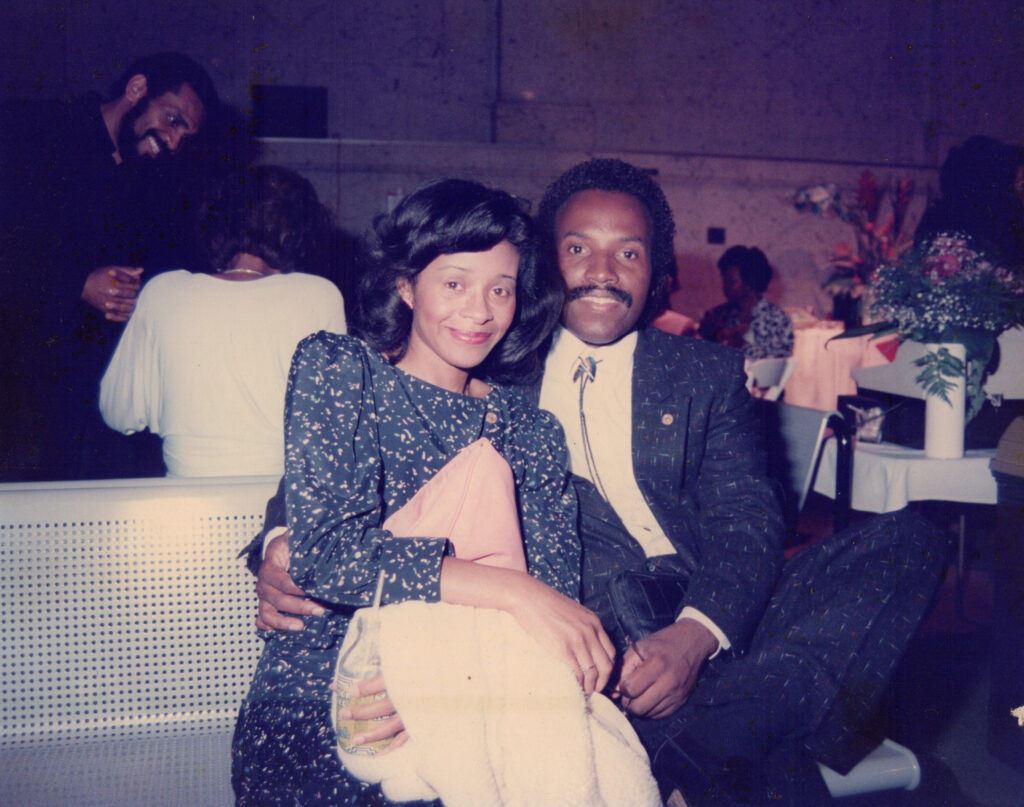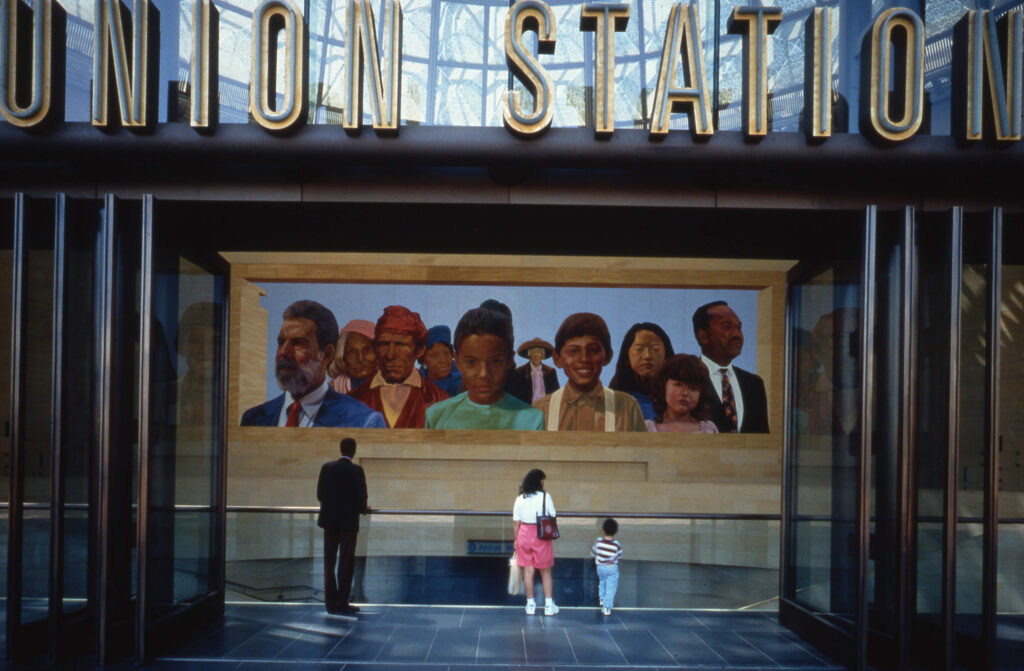In February 2023, Dr. Bridget Cooks and I had the pleasure of interviewing the Los Angeles-based visual artist and songwriter Richard Wyatt, Jr., for the Getty Research Institute’s African American Art History Initiative. Wyatt was a joy to interview, making us laugh constantly and sharing what he called Forrest Gump moments, where he was in the right place at the right time to meet and collaborate with celebrities of all stripes.
A little over a year after this delightful interview, Bridget and I were saddened to hear that Richard had passed away in May 2024. The world has lost a kind and funny man, as well as an talented artist, musician, educator, and thinker.
While I continue to mourn Richard’s passing, I also want to celebrate his life by highlighting the wonderful stories he shared in his oral history about life, art, music, and seeking new challenges.

Richard Wyatt, Jr., was an artist whose work includes drawings, paintings, installations, and public art. Wyatt was born in Lynwood, California, in 1955, and lived in the Los Angeles area his whole life. He began his art career early, winning the Watts Chalk-In at twelve years old, and then studying at the Watts Towers Art Center, the Chouinard Art Institute, and the Tutor/Art Program with artist Charles White. Wyatt attended the University of California, Los Angeles, where he earned a BFA in art. Some of his best-known work in Los Angeles includes the mural Hollywood Jazz: 1945-1972 on the Capitol Records Building; the mural City of Dreams, River of History in Union Station; and the installation Ripple of Hope at Robert F. Kennedy Inspiration Park. Wyatt taught drawing and painting at the University of California, Irvine; the Otis Art Institute; and the Watts Towers Art Center. He also had a career as a songwriter, writing songs for musicians like The Miracles, The Sylvers, and New Edition.
One thing that continues to strike me about Richard is the indelible mark he has left on the world—and I mean that literally. Some of Richard’s best-known work was his public art, which adorned buildings and other public places in the Los Angeles area and beyond. For this reason, Bridget found interviewing Richard almost surreal. In the oral history, she explained, “…your work is part of my Los Angeles,” for indeed, Richard’s public art shaped the city in which she grew up. After our first day of interviews, Cooks and I drove around Downtown Los Angeles, pointing out and visiting sites where Richard’s work dotted the landscape: Union Station, Robert F. Kennedy Inspiration Park, the Capitol Records Building, and on and on.

One of Richard’s most famous murals, Hollywood Jazz: 1945-1972, remains on the Capitol Records Building, although he later replaced the paint on this south-facing exterior wall with ceramic tile to combat the ravages of the sun. When Richard accepted the commission for this work, it was the perfect blend of his love of visual art and his passion for music. In this mural, he memorialized jazz greats, such as Billie Holiday, Ella Fitzgerald, Miles Davis, and Nat King Cole. And in one of those Forrest Gump moments, Richard met musician Bonnie Raitt on site at the Capitol Records Building during his original installation. Listen as Richard recounted this moment:
Richard also mused about the role of an artist after unveiling a work of public art, sharing his thoughts on the impact of his public work: “…you can’t control it…Once it’s out there, it’s out there. People are going to interpret it and take pictures.” And while we spoke about the joys of creating art for wide public consumption, Richard also acknowledged some of the challenges inherent in this work. Listen as Richard shared about some of his public art work with collaborator and fellow artist May Sun:
Richard’s talent also extended to music, and resulted in a prolific career as a songwriter for musical artists such as The Miracles, The Sylvers, Peaches & Herb, Tavares, Johnny Gill, and New Edition. Richard wrote his first song, “Keep on Keepin’ On (Doin’ What You Do)” for The Miracles when he was just eighteen years old. But for Richard, visual art and music were always intertwined, as he experienced synesthesia, a sensory condition in which, among other things, allows some people see colors when they hear music. Richard explained his synesthesia this way:
“I didn’t even know that term until somebody else told me…When I’m writing, that’s one thing. But once I start arranging it and getting the bass and guitar, and then you get strings and horns, there are certain sounds that have a color associated with them. I can’t explain it, but…I see colors once I hear a certain sound, you know? And when I’m creating the arrangements, or even mixing or whatever, and I’m going for a certain effect, it’s like once you get mixing, to me it’s like glazing in oil. That’s the easiest way I can explain it.”
Richard was a child prodigy who burst into the art world when he was twelve years old, rubbing elbows with more experienced art world talents like Charles White, John Riddle, George Evans, and Bill Pajaud. Yet, Richard carved out a career all his own. And while he left us too soon, Richard’s art lives on. To celebrate this remarkable man and artist, I suggest spending time in Downtown Los Angeles and experiencing the work of Richard Wyatt, Jr., for yourself.
To learn more about Richard Wyatt, Jr.’s, extraordinary life and work, explore his oral history!
About the Oral History Center
The Oral History Center of The Bancroft Library preserves voices of people from all walks of life, with varying political perspectives, national origins, and ethnic backgrounds. We are committed to open access and our oral histories and interpretive materials are available online at no cost to scholars and the public. You can find our oral histories from the search feature on our home page. Search by name, keyword, and several other criteria. Sign up for our monthly newsletter featuring think pieces, new releases, podcasts, Q&As, and everything oral history. Access the most recent articles from our home page or go straight to our blog home.
